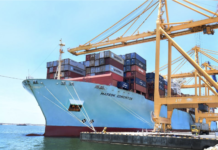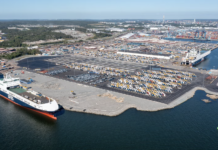
Amid the COVID-19 outbreak, South Korea’s Ministry of Oceans and Fisheries plans to provide around KRW60 billion (US$ 51 million) in loans and incentives to stevedoring companies, port operators and liner operators that are affected by the plunge in container shipments from China.
Should the situation persist over the next three months, the loans will be disbursed to companies that apply for the financial aid.
With regard to liner operators, the financial assistance will be in the form of ship sale-and-leaseback deals with state-backed shipping finance house Korea Ocean Business Corporation. KOBC’s allotted budget for 2020 is KRW100 billion (US$84.4 million) but can be expanded should the need arise.
For the sale-leaseback deals, the ratio of the loan to the asset value has been raised from around 70% to 80% to 80% to 90%, while the interest rate will be discounted.
Since COVID-19 began spreading beyond China, container shipments between South Korea and China have fallen by more than half, as Chinese port operations have slowed. Meanwhile, storage facilities at Busan New Port are now at 80% capacity with empty containers due to the bottlenecks.
With storage facilities in South Korean ports nearing capacity, the government worked with local port authorities to secure additional sites.
South Korea’s trade volume with China reached about 220 million tonnes in 2019, accounting for 16.8% of domestic import and export trade.
Highlighting how much shipments have fallen, Florida Bay, a 4,253TEU ship operated by Hyundai Merchant Marine, was only 30% full when it arrived at Busan New Port on 14 February after calling at China’s Ningbo port.
The MOF is also offering incentives to ports to encourage them to attract more transhipment volumes. The incentives will be up to 10% of the value of the transhipped cargoes.
Busan, now the busiest container transshipment port in northeast Asia, may get up to KRW14.3 billion (US$12 million) in incentives.
Martina Li
Asia Correspondent








